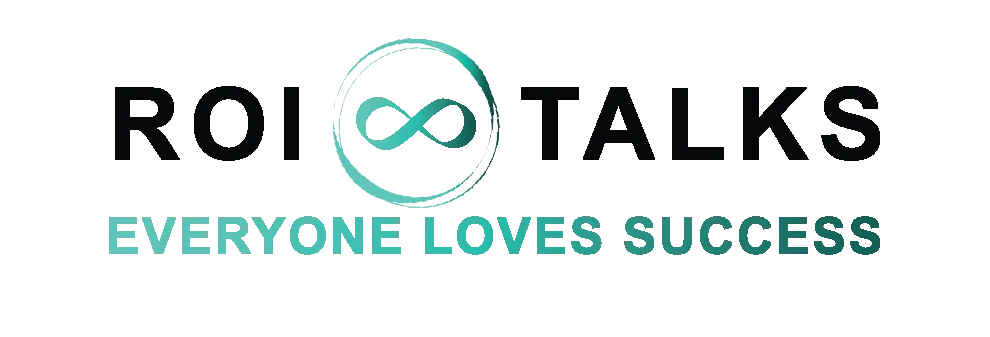
Everyone Loves Success
ROI TALKS
Roi Talks Blog

Discover The Power of The Triune Brain To Uplift Your Communication
Yes, the power of the brain has a significant impact on communication. The brain is responsible for processing information and producing language, which are essential components of effective communication.
When the brain is functioning at optimal levels, communication is likely to be clear, concise, and effective. This is because the brain can process information quickly and accurately, allowing individuals to understand and respond to messages with ease.
On the other hand, when the brain is not functioning properly, communication can be impaired. For example, individuals with certain neurological disorders, such as aphasia or dyslexia, may struggle to understand or produce language effectively. Similarly, individuals who are experiencing stress, anxiety, or fatigue may find it difficult to concentrate, process information, or communicate effectively.
The triune brain is a model that describes the evolution of the human brain over time. The triune brain model was first introduced by neuroscientist Paul MacLean in the 1960s. It suggests that the human brain can be divided into three distinct parts, each of which is responsible for different functions. These three parts are the reptilian brain, the limbic system, and the neocortex. Using the triune brain model can be helpful when it comes to effective communication, as it can provide insights into how different individuals process and respond to information.
The reptilian brain, which is the oldest part of the brain, is responsible for instinctive and automatic behaviours such as fight or flight responses. This part of the brain responds to basic sensory information, such as visual and auditory cues. When communicating with individuals who are primarily driven by their reptilian brain, it can be helpful to use clear, direct language and to emphasize visual and auditory cues.
The limbic system is responsible for emotions, memory, and social behaviour. This part of the brain responds to information that is emotionally charged or relevant to personal experiences. When communicating with individuals who are primarily driven by their limbic system, it can be helpful to use language that resonates emotionally and to emphasize the relevance of the message to the individual's personal experiences.
The neocortex is the most evolved part of the brain and is responsible for complex cognitive processes such as reasoning, planning, and problem-solving. This part of the brain responds to abstract and complex information. When communicating with individuals who are primarily driven by their neocortex, it can be helpful to use language that is precise, logical, and structured.
The reptilian brain is the oldest part of the brain, responsible for basic survival functions such as breathing, heart rate, and fight or flight responses. It is also involved in instinctive and automatic behaviours such as aggression and territoriality. The limbic system, which evolved in mammals, is responsible for emotions, memory, and social behaviour. It includes the amygdala, hippocampus, and hypothalamus, among other structures. Finally, the neocortex, which evolved in primates, is responsible for higher-order cognitive processes such as language, abstract reasoning, and problem-solving.
Research has shown that the triune brain model can be a useful tool for understanding how different individuals process and respond to information. For example, a study published in the journal Cerebral Cortex found that different regions of the brain were activated depending on whether individuals were processing visual, auditory, or somatosensory information. This suggests that individuals may rely on different parts of the brain to process different types of information, which in turn can affect how they understand and respond to communication.
In terms of communication, understanding the triune brain can be helpful in tailoring your message to the needs and preferences of the individual you are communicating with. For example, if you are communicating with someone who is primarily driven by their reptilian brain, using clear, direct language and emphasizing visual and auditory cues may be more effective than using abstract or complex language. On the other hand, if you are communicating with someone who is primarily driven by their limbic system, using language that resonates emotionally and emphasizing the relevance of the message to the individual's personal experiences may be more effective.
One example of how the triune brain can impact communication is in the realm of marketing. A study published in the Journal of Marketing Research found that individuals responded more positively to advertisements that targeted their limbic system (e.g., through emotional appeals or relevant personal experiences) than to advertisements that targeted their neocortex (e.g., through logic or reasoning).
Another example is in the realm of education. Research has shown that individuals learn more effectively when they are engaged emotionally and have a personal connection to the material they are learning. By understanding the triune brain, educators can tailor their teaching methods to engage students' limbic systems and promote deeper learning.
In conclusion, understanding the triune brain model can be a powerful tool for improving communication in a variety of settings such as leadership, sales, team collaboration, marketing, innovation creativity, personal relationships and much more. By recognizing that different individuals may be driven by different parts of the brain, we can tailor our language, tone, and delivery to better resonate with their needs and preferences.
Moreover, by leveraging the emotional and social aspects of the brain, we can create deeper connections with others and foster more meaningful interactions. As research on the triune brain continues to evolve, we can expect to gain even greater insights into the complex workings of the human brain and how to use this knowledge to communicate more effectively.
ROI TALKS™
Marina Plaza - Office 1004 -1006
Dubai Marina, Dubai, UAE




